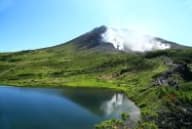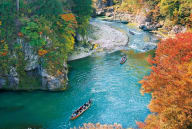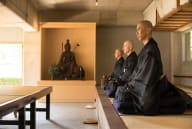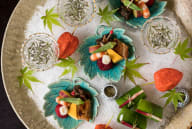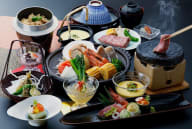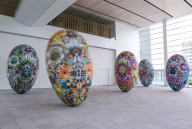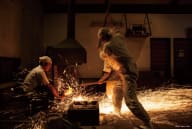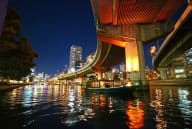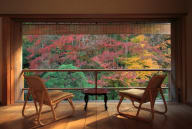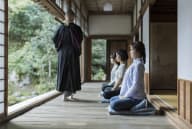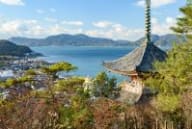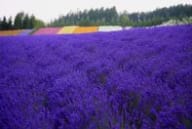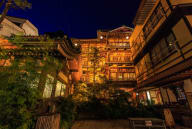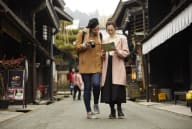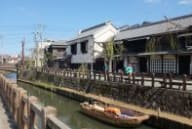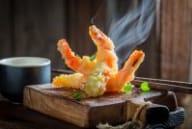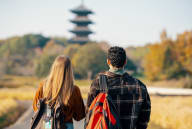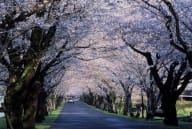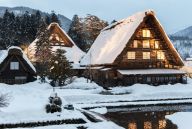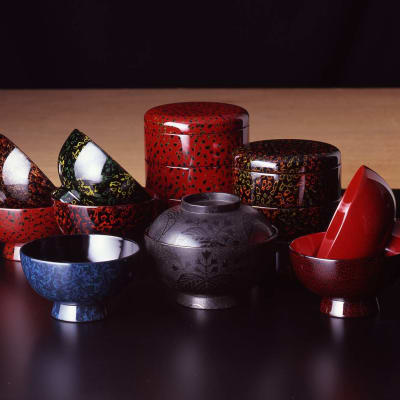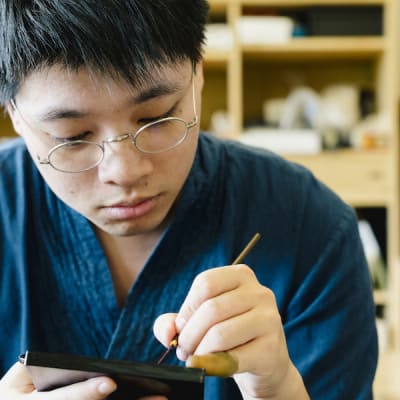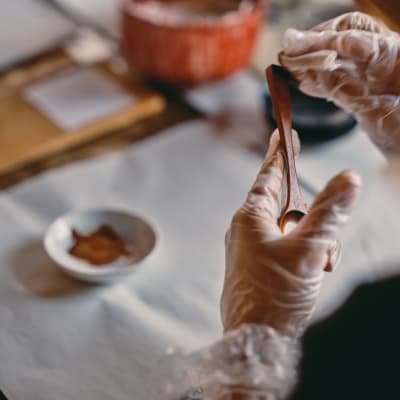Use the
Planning a Trip to Japan?
Share your travel photos with us by hashtagging your images with #visitjapanjp

The Japanese lacquer tree, or urushi, is native to Japan. Its sap is a natural lacquer that has been harvested for coating objects since prehistoric times. With the right humidity conditions, the sap hardens when exposed to air and forms a durable, glossy coating resistant to water.
Lacquer was used in Japan from as early as the Jomon period, when it adorned earthenware, wooden containers, tools, and accessories such as earrings. From approximately the seventh century, it was used at temples to protect and decorate sacred structures and artifacts. Today, it is used to coat a variety of household items, transforming humble bowls into objects of art.
The relationship between people and the lacquer tree is reciprocal: Artisans care for lacquer forests, and in return, the trees give their sap. This cycle encapsulates the philosophy of living in harmony with nature, as urushi lacquerware is natural, repairable, and biodegradable, standing in stark contrast to our modern reliance on plastics. It reflects the GREEN×EXPO 2027 subtheme of Co-existence, which focuses on how people and the natural world can thrive together.
Korekawa Archaeological Institution: Lacquer and Japan’s prehistoric peoples

Long before Japan’s famous lacquerware bowls and trays adorned dining tables, lacquer had an important place in daily life—and even in spiritual belief. During the Jomon period (14,500–900 BCE), people discovered that the sap of the lacquer tree could be used to create durable, waterproof, and beautiful finishes for tools, utensils, and ornaments. The Jomon lacquer culture was remarkably sophisticated, combining black and red lacquer with decorative inlay techniques. The foundations laid by these early craftspeople would influence Japanese lacquerware traditions for millennia.

In the boggy lowlands of Aomori Prefecture, archaeologists have unearthed some of the oldest lacquered objects in Japan—and possibly the world—including bowls, combs, bracelets, and containers. Many of these treasures are on display at the Korekawa Archaeological Institution, a research center and museum dedicated to Jomon culture. Here, visitors can also observe a National Treasure: the Gassho Dogu, an iconic clay figurine with clasped hands
Chusonji Temple: A golden testament to early lacquer artistry

Lacquer’s properties made it invaluable not just for everyday items but also for religious architecture and sculpture. With the introduction of Buddhism to Japan in the fifth century, lacquer became a key material for coating temples, statues, and ritual objects.
One of the finest examples of lacquer in Buddhist architecture can be seen at the UNESCO World Heritage Chusonji Temple in Hiraizumi, founded in 850. While the temple houses an impressive collection of lacquerware, its crown jewel is the Konjikido (Golden Hall).
Completed in 1124, the Konjikido represents the Buddhist Pure Land. It is coated with lacquer and adorned with gold leaf, intricate mother-of-pearl inlay, and the lavish maki-e technique, in which gold or silver powder is sprinkled in soft lacquer. These fine details make it a masterpiece of Heian-period (794–1185) temple design.
Joboji Lacquer Forest: From tree to treasure

Most of Japan’s domestically produced lacquer comes from the forests of Joboji in Ninohe, Iwate Prefecture. Here, the tradition of lacquer tapping has been passed down for generations. During the warmer months, when the sap flow in the trees is most active, skilled tappers score the bark of lacquer trees and collect the precious sap drop by drop—a slow, labor-intensive process.

Visitors can learn about this craft at Tekiseisha, a lacquer studio and workshop. Large observation windows allow guests to watch artisans at work as they apply and polish layers of lacquer with remarkable precision. Tekiseisha also offers hands-on workshops, where you can polish your own lacquer tablet. The studio sells a range of Joboji lacquerware, all made entirely from locally sourced lacquer, as well as works by other regional craftsmen.
On hot and humid days during the tapping season, between June and November, you may even be able to see lacquer tappers at work in the nearby forests; a rare glimpse into a centuries-old craft.
Shoboji Temple: A special meal with lacquer tableware

Nestled in a lush valley, Shoboji Temple offers visitors a rare culinary experience. Here, you can savor shojin-ryori, the traditional vegetarian cuisine of Buddhist monks, prepared with fresh seasonal herbs, mountain vegetables, mushrooms, tofu, and pickles.

What makes the dining experience truly unique is the Shoboji bowls: plain black lacquer bowls with a gracefully curved rim and low base. Holding and eating from these vessels allows visitors to appreciate lacquer not only as art but also as a sensory experience. Its smooth texture, subtle sheen, and balance in the hand enhance the meditative nature of the meal.
Gallery CASAICO: Experiencing lacquer craftsmanship through hands-on workshops
The Tsugaru Nuri lacquerware of Hirosaki, Aomori has been made for over 300 years. Its unique togidashi kawari nuri technique creates intricate, multi-layered patterns of colored lacquer on a base of Tsugaru cypress. Each piece is coated dozens of times over two months, resulting in lacquerware that is both thick and enduring.

At Gallery CASAICO, visitors can watch artisans at work, view beautiful Tsugaru Nuri pieces or create their own to take home. Alternatively, you can try your hand at kintsugi: the art of repairing broken ceramics with lacquer and gold dust. Afterward, pay a visit to Hirosaki Castle, famous for its cherry blossoms—many of them were planted hundreds of years ago, when lacquerware flourished in the region.
Oirase Gorge: A walk to appreciate the beauty and bounties of nature

Lacquer is a gift from nature, and nowhere is that connection more vivid than at Oirase Gorge in Aomori. This mountain stream winds through a dense forest of oak, maple, and beech, past moss-covered boulders and gently cascading waterfalls. Home to over 300 moss species, Oirase offers a lush tapestry that mirrors the natural beauty and diversity of lacquer art.
Guided hikes offer a great way to learn more about the local flora and fauna. The trail stretches for about 14 kilometers, offering a meditative experience that allows visitors to reconnect with the natural world.
Key takeaways
From the prehistoric lacquered bowls of the Jomon peoples and the golden splendor of Chusonji’s Konjikido to the modern studios of Hirosaki, lacquer remains one of Japan’s most enduring art forms. With a deep, reciprocal connection with forests, this delicate craft shows us how humans can live in harmony with the natural world, reflecting the GREEN×EXPO 2027 subtheme of Co-existence.


©Expo 2027
















